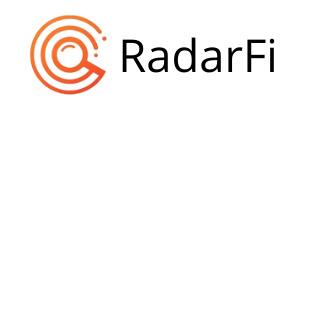RadarFi
DeFi security solutions you can trust
Created on 3rd August 2022
•
RadarFi
DeFi security solutions you can trust
The problem RadarFi solves
RadarFi is an aggregator platform that caters to all your security and risk needs. Any DeFi app, exchange and wallet needs to safeguard its users against fraudulent transactions, network attacks, user wallet attacks and mining pool attacks. The platform will help financial authorities, cryptocurrency wallet and exchange firms flag out fraudulent transactions by tagging high-risk, medium-risk, and low-risk users by tracking their transactions across wallets present in multiple chains.
Currently, money launderers can easily trick the existing solutions that provide provisions for flagging high-risk users and transactions. There are solutions that do this for a given wallet but it's easy to twitch the system by transferring a fraction of the assets across chains. The objective is to trace the history across chains and prevent a server or bots from trying to bump or create a short in the market. Moreover there’s no single solution in the market that provides this suite of solutions at one place. RadarFi is an aggregator platform that will help flag the transactions and attacks in Near real time and bring down the fraud and risk money pool from a whooping $4.6 bn. The major challenge here is aggregating data as it requires high computational resources.
To drive the adoption of the solution and make the community an integral part of the solution, radarFi will also inculcate a platform where users can add their data to the databases and monetize for their resources. This helps in 2 folds: You take the community support to build together and also create more awareness about the security space to drive RadaFi’s adoption.
The platform aims to uncover different patterns like:
Flagging users that create multiple accounts under different names to circumvent the exchange’s trading and withdrawal limits, or that attempt to open accounts frequently using the same IP address.
Transactions that originate from untrustworthy or suspicious demographic regions
Challenges I ran into
Collating data and tagging data to start the initial process of identifying the fraudulent transactions was a daunting and tedious task. Took help from research literature to start with initial model building and then used that model to tag any blockchain transaction data I was able to get from chain
Project Updates (19-08-2022)
Progress as per the plan is on track.
The accuracy for test on 1 weeks data(July 1st week) is 94.2% for the smart code vulnerability detector &
96.7% for transaction monitoring.
I have run adhoc tests on the models and now wrapping all this into an API.
Since I currently don't have the computational resources to run multiple archival nodes /pull data from bridges, I am talking to biconomy to do testing on their bridge data and benchmark some results on their bridge data.
